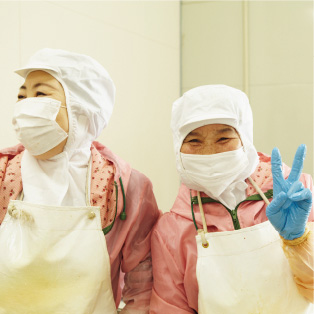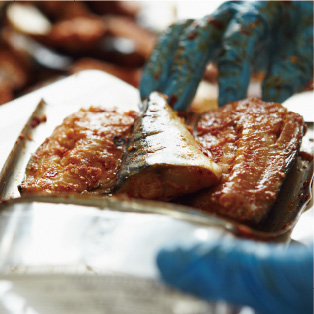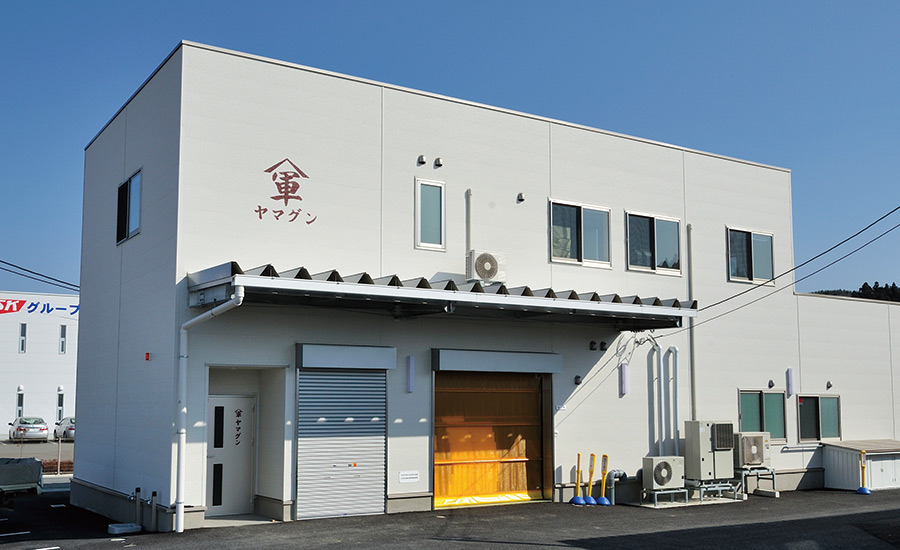
Yamagun Co.,Ltd.
988-0003 Motohama-cho 2-chome, Kesennuma-City, Miyagi-ken
President and CEO: Tetsuro Takahashi
TEL:+81-(0)226-22-0883
FAX:+81-(0)226-22-7011
e-mail:yamagun.com@gmail.com
This nostalgic taste unchanged over time comes from a secret recipe handed down to the present
The “Korean style mackerel pickle” developed by the former president around 1965 has retained its nostalgic taste without change over time. It is Yamagun’s most popular product and is a favorite of many people.
Taste and materials
Yamagun pledges to keep on using its secret recipe unchanged as handed down from the former president who created it more than 50 years ago.
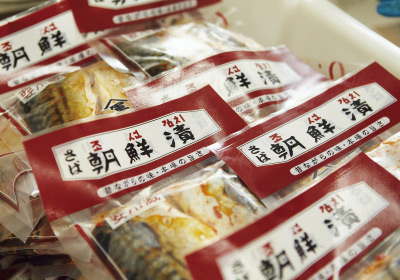
Equipment
Each day, the amount of fish taken out from the company’s own freezer is used for the day’s production. It is defrosted and prepared, and then well-seasoned using the company’s original machine.
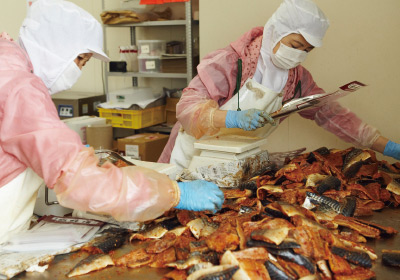
Craftsmanship
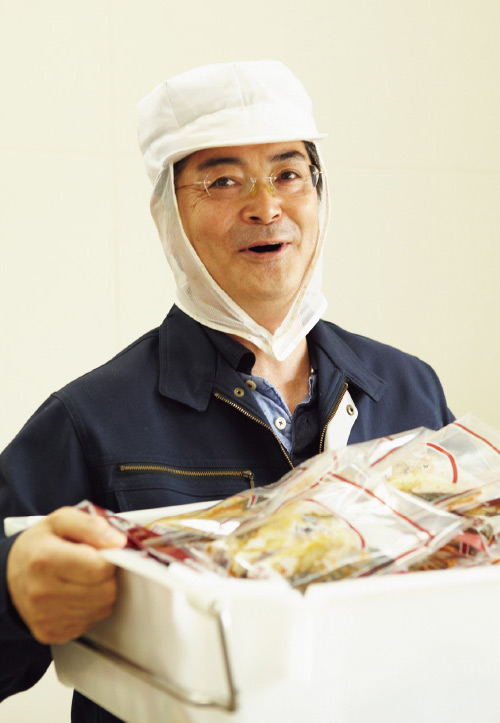
“Unchanging, thus nostalgic. Preserving this flavor till the end.”
President and CEO: Tetsuro Takahashi
“The recipe I thought was lost. I found it within myself.”
“The taste that has remained unchanged for over 40 years,” said Tetsuro Takahashi, the representative director of Yamagun Co., Ltd. The one they’ve been preserving is their flagship product, “Saba Chosenzuke” (pickled mackerel). It’s a taste painstakingly crafted by the previous president. The flavor I had was irresistible, with just the right amount of spiciness that becomes addictive. It’s the kind of taste that makes you want to keep eating. They haven’t changed the packaging design since its release. However, back then, vacuum packaging technology wasn’t available, so it was simply wrapped. “I remember helping with stapling the packaging and getting pocket money when I was in sixth grade,” laughs Mr. Takahashi. The precious sauce and secret recipe that had been passed down were taken away by that disaster. However, a taste that had been cultivated for over 40 years and continued to be made for over 40 years doesn’t disappear easily. The unchanged taste of Yamagun was revived by the “recipe retrieved from memory” by Mr. Takahashi. It took a year and a half for Yamagun to resume operations, but during that time, they were supported by many encouraging words such as “Don’t give up,” and “Please send it as soon as you resume.”
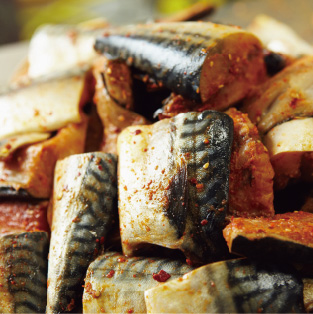

The Yamagun castle, brimming with the joy of creation.
Yamagun currently operates its office and processing facility within the cooperative facility of the Kesennuma Kariwaza Processing Cooperative. It’s a place where member companies can support each other as part of the cooperative. While the space may not be extravagant, the facility is fully operational with all the necessary equipment.
Inside the pre-processing room, rows of frozen whole mackerels line the freezer, with about 1 ton stored at all times. Every day, around 300 kg is taken out for natural thawing, even on Sundays for Monday’s use. “Yes, I come here 365 days a year,” says Mr. Takahashi. “I’m happier to be working than taking a break.”
Once thawed, the whole mackerels are cleaned, cut, salted, and introduced to the secret sauce. The seasoning process involves a machine originally designed for making salted seaweed, gently rotating to coat the fish without damaging the flesh.
The seasoned mackerels are then carefully hand-packed in the adjacent bagging and packaging room before being vacuum-sealed by a vacuum packaging machine. Finally, they undergo thorough inspection using a metal detector that reacts even to sweat before being packed into “Yamagun’s boxes.” This is how Yamagun’s flagship products embark on their journey, reaching Kesennuma and beyond.
Moving forward without rest, With dreams in tow, together.
Mr. Takahashi was born in Kesennuma and spent his high school years there. He went on to study at a university in Tokyo, where he graduated and then joined a fruit trading company that dealt with papayas. Later, he transitioned to become a computer system engineer. Both roles were pioneering in their respective fields at the time, providing him with valuable business knowledge and experience.
At the age of 29, Mr. Takahashi returned to Kesennuma and joined Yamagun. He felt a nostalgic connection to the long-lost taste. “It’s nostalgic because it hasn’t changed. It’s loved because it hasn’t changed,” he thought at that moment.
Currently, Mr. Takahashi resides in temporary housing in Muroone, Ichinoseki City, spanning across the prefectural border. “Due to housing constraints, I can’t keep many things, so this is my current pleasure,” he says, enjoying his favorite Scotch whiskey after work. During these moments, he dreams of rebuilding the house that was destroyed by the disaster after only 8 years of being newly built.
Today, Mr. Takahashi continues to move forward without rest, 365 days a year. His dreams also march forward tirelessly alongside him.
